Rupert Matthews's Blog, page 40
May 24, 2012
A gladiator on horseback
Equites
The equites entered the arena mounted on horses, but would dismount after a time if neither man had won. The equites were unusual in that they wore cloaks, perhaps to copy the uniforms of cavalrymen in the army.
from GLADIATORS - ACTION FILES by Rupert Matthews. Buy your copy HERE

The equites entered the arena mounted on horses, but would dismount after a time if neither man had won. The equites were unusual in that they wore cloaks, perhaps to copy the uniforms of cavalrymen in the army.
from GLADIATORS - ACTION FILES by Rupert Matthews. Buy your copy HERE

Published on May 24, 2012 23:45
May 22, 2012
The Destruction of Montenegro 1916
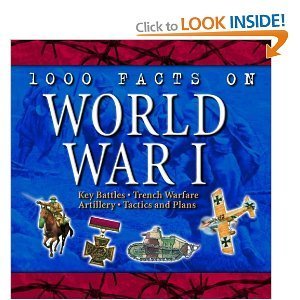
By the end of 1915, Turkey and Bulgaria had both joined the war on the side of the Central Powers Germany and Austria. However, Germany was still faced by a war on two fronts.
The Austrians were beginning to think that they could not win the war. General Conrad von Höztendorf told his government on 4 January “There is no question of destroying the Russian war machine”.
German commander in chief von Falkenhayn and the Kaiser decided to finish the war in the Balkans first by crushing the tiny mountain kingdom of Montenegro. This would allow the Austrians to concentrate on Russia.
A joint Austrian-Bulgarian offensive was organised. The attack smashed the Montenegrian army in just 9 days. On 17 January Montenegro surrendered to Austria.
From 1000 Facts on World War I by Rupert Matthews. buy your copy HERE
[image error]

Published on May 22, 2012 01:11
May 20, 2012
Bribes in Ancient Greece
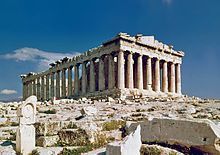
Ancient Greek cities did not employ many workmen directly. When a large construction job needed doing a contractor would be hired to do the job.
In 430bc the city of Athens decided to build a new temple to their patron goddess Athene (see page 182). The city hired the architect Actinus who not only designed the building but also organised its construction.
Actinus produced a monumental temple of elegant proportions that is famous today as the Parthenon. The cost of such contracts was enormous.
There was a great temptation to offer and accept bribes. Builders were keen to gain valuable contracts and were willing to share the profits with the men whose job it was to award the contracts.
Government officials were not allowed to take bribes and punishments could be severe. However many men elected as officials were fairly poor and might be tempted. A close watch was kept on officials.
Architeles, an Athenian official, was sent a box of food by a politician. Architeles staff thought the gift was of such low value that it was not a bribe., but a purse of gold coins was hidden under the food.
The Athenian admiral Themistocles took a bribe from the government of Euobea to bring the Athenian fleet to help them during the Persian wars (see page 28). He did not tell the Euobeans that this was what he had been ordered to do anyway.
An accusation of corruption was a favourite way to try to discredit a rival politician. Such allegations were difficult to prove, but they often created a climate of suspicion.
Themistocles was put in charge of rebuilding the port of Piraeus in about 485bc. The new port was much admired, but Themistocles was accused of taking bribes and forced to leave Athens.
Judges were often accused of taking bribes to favour one side or another in a court case. Any judge found to have taken a bribe was instantly dismissed.
Priests were sometimes bribed to spoil sacrifices to make it look as if the gods disapproved of certain people or actions. One priest from Delphi who took such a bribe was exiled for life.
from "100 Facts on Ancient Greece" buy your copy HERE
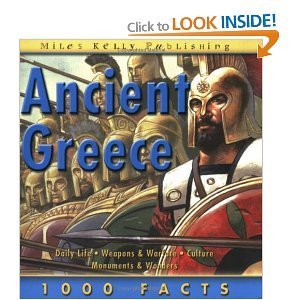

Published on May 20, 2012 02:31
May 18, 2012
Tyburn Gibbet
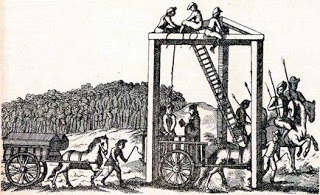
In 1783 the infamous Tyburn Gibbet was dismantled and executions thereafter took place at Newgate Prison. It was an exercise in humanity as the notoriously tough criminal laws of England were gradually relaxed.
Tyburn Hill took its name from a narrow stream, the Ty Burn, which ran past it to enter the Thames to the south and is close to where Marble Arch now stands. It was chosen as a place of execution in medieval times because it formed a prominent rise on the main road out of London to the west.
All manner of felons were hanged at Tyburn, except for the nobility. From time immemorial noblemen were granted the privilege of being executed by having their heads chopped off with an axe, this being a quicker and less painful death. The gibbet at Tyburn took the form of a horizontal wooden bean supported by two posts. The unfortunate to be hanged was placed on a cart under the beam, his neck tied to the beam with a stout rope and the cart driven away. Death resulted from slow strangulation, though friends and relatives were allowed to hasten death by pulling on the legs.
Such executions were, of course, public and sometimes attracted large crowds to the open fields around Tyburn. The largest crowds were attracted by highwaymen who had frequently led colourful and glamourous careers before being caught. For a celebrity victim, such as highwayman James Maclean, hanged in 1750, the day of execution was a carefully choreographed spectacle. After being allowed to receive visitors in his cell, several of whom were charged for the privilege, the criminal would be allowed to don his finest clothes for the execution. Several even ordered new suits for their final day.
Loaded on to the back of a cart, the criminal was then driven out of Newgate Prison, which stood on the site of the Old Bailey. The procession of guards and cart proceeded up Holborn and out along Oxford Street. The cart was stopped whenever it passed an inn and the criminal would be allowed a drink, to be paid for by the executioner on the return journey. When the cart reached Tyburn, the assembled crowd would fall silent for the final speech from the scaffold. Some poor men hardly said a word, but Maclean gave forth an impassioned Biblical tirade on the wickedness of men and called on all present to lead honest lives. These speeches were often copied down, printed up on cheap newsheets and sold around London that evening.
Then the execution took place.
In 1783 the decision was taken to dispense with the long journey to Tyburn, with executions being held on a scaffold outside the prison. the move was made to spare the criminal the long journey and to ensure a speedy and well organised execution. Not everyone approved, Dr Johnson for one arguing that the deterrent effect of execution was lessened if the spectacle was over too quickly.
Fortunately most people disagreed and the moves to make justice more merciful continued. Executions were first made swifter in 1788 when the trapdoor, leading to a swiftly broken neck was introduced and in 1865 public executions were ended.

Published on May 18, 2012 01:28
May 16, 2012
Weapons of War
Arms and armour were used in battles for hundreds of years.
For thousands of years people have used arms and armour when fighting wars. Arms, or hand weapons, are used to attack other people. They are weapons that can be carried by a single person. Armour is used for defence – it is used to stop weapons from causing injury or death. At first arms and armour were very simple, but over the years they changed to become more complex and effective. Sometimes a new type of armour or weapon can have a dramatic impact. At the Battle of Lechfield in 955 the Germans crushed the much larger army of Magyars because they were wearing heavier types of armour and carried new weapons.
from 100 Things You Need to Know about Arms and Armour by Rupert Matthews. Buy your copy HERE
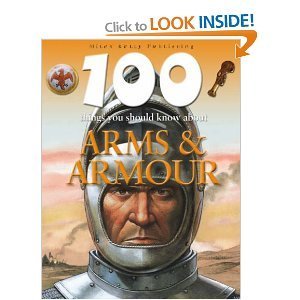


For thousands of years people have used arms and armour when fighting wars. Arms, or hand weapons, are used to attack other people. They are weapons that can be carried by a single person. Armour is used for defence – it is used to stop weapons from causing injury or death. At first arms and armour were very simple, but over the years they changed to become more complex and effective. Sometimes a new type of armour or weapon can have a dramatic impact. At the Battle of Lechfield in 955 the Germans crushed the much larger army of Magyars because they were wearing heavier types of armour and carried new weapons.
from 100 Things You Need to Know about Arms and Armour by Rupert Matthews. Buy your copy HERE


Published on May 16, 2012 01:10
May 14, 2012
Supercarriers of the Future
The US Navy is currently planning the next generation of
supercarriers, dubbed the Ford class after President Gerald Ford. These ships,
of which three have been ordered for 2020, will use the basic hull shape of the
Nimitz class but will contain a large amount of improved equipment including
better radar, catapults and arresting gear, improved engines and a entirely
redesigned island structure.
The USA is currently the only country operating supercarriers, but
two other navies have similar ships on order. The British Royal Navy has
ordered two supercarriers to be named Queen Elizabeth and Prince of Wales. Each
of these ships is to displace 65,000 tons will be 920 feet long and be 128 feet
in the beam. They will be capable of 25 knots and will be able to travel about
10,000 miles without refueling.
The aircraft carried by each of the British supercarriers will be 36
Lockheed F-35 Lightning II multi-role fighters and 4 airborne early warning
radar aircraft. The Lightning was designed for use on carriers and is a
versatile aircraft able to carry out bombing, dog fighting and ground attack
missions. In theory each carrier could carry an additional 10 aircraft, and it
is expected that these will be helicopter rather than fixed wing.
The arrival of the two carriers will solve a long-standing problem
experienced by the Royal Navy. The navy’s existing carriers are a trio of
22,000-ton carriers that had been specifically built in the 1970s to provide
anti-submarine patrols across the North Atlantic. In the 1982 Falklands War,
however, HMS Invincible had been hurriedly converted to a more conventional
carrier role. This had convinced the Royal Navy to convert all three to a
multi-task role for which they had not been built. The new carriers will be the
first British carriers designed for wide ranging duties since the 1950s.
The French announced in 2008 that they would be ordering a
supercarrier similar to the British ships and built by the same consortium. The
ship, provisionally named Richelieu, would be slightly larger than the British
ships and contain some distinctively French features, such as two command
islands. It is expected to carry 32 Rafaele fighters, 3 early warning aircraft
and a number of helicopters. However, in 2009 the French government announced a
delay to the project due to the economic crisis and the anticipated completion
date of 2017 is now in doubt.
from The Historical Atlas of Weapons by Rupert Matthews. Buy your copy HERE.
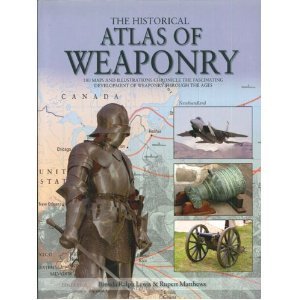

Published on May 14, 2012 00:48















